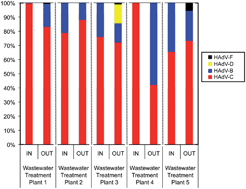Zn and ZnO nanoparticles are used in plenty of consumer products, including disinfectants, so compiling information on their toxicity and impact in different environments is crucial to ensure safe usage.
Zikri Arslan at Jackson State University led a team of USA-based researchers to investigate the toxicity of Zn and ZnO nanoparticles in marine aquatic systems. Their study of brine shrimp larvae in sea water published in Issue 1 shows accumulation of the nanoparticles inside the guts and an inability of the shrimp to remove the accumulations.
 The shrimp don’t appear to suffer any ill effects over 24 hours, but 96 hours after exposure their mortality rate escalated with the increasing accumulation of nanoparticles. This toxicity is associated with a triggering of oxidative stress.
The shrimp don’t appear to suffer any ill effects over 24 hours, but 96 hours after exposure their mortality rate escalated with the increasing accumulation of nanoparticles. This toxicity is associated with a triggering of oxidative stress.
The team showed that Zn nanoparticles are more toxic to shrimp than zinc oxide nanoparticles in the same conditions and this could be because zinc nanoparticles release more Zn2+ ions. Size is also a factor, with smaller nanoparticles being more toxic than larger ones.
For the detail, have a read of the whole article in Issue 1. Issue 1 is a themed issue on anthropogenic nanoparticles in the environment, which is free to access!*
Comparative evaluation of impact of Zn and ZnO nanoparticles on brine shrimp (Artemia salina) larvae: effects of particle size and solubility on toxicity
Mehmet Ates, James Daniels, Zikri Arslan, Ibrahim O. Farah and Hilsamar Félix Rivera
DOI: 10.1039/C2EM30540B
*Free access to individuals is provided through an RSC Publishing personal account. Registration is quick, free and simple












